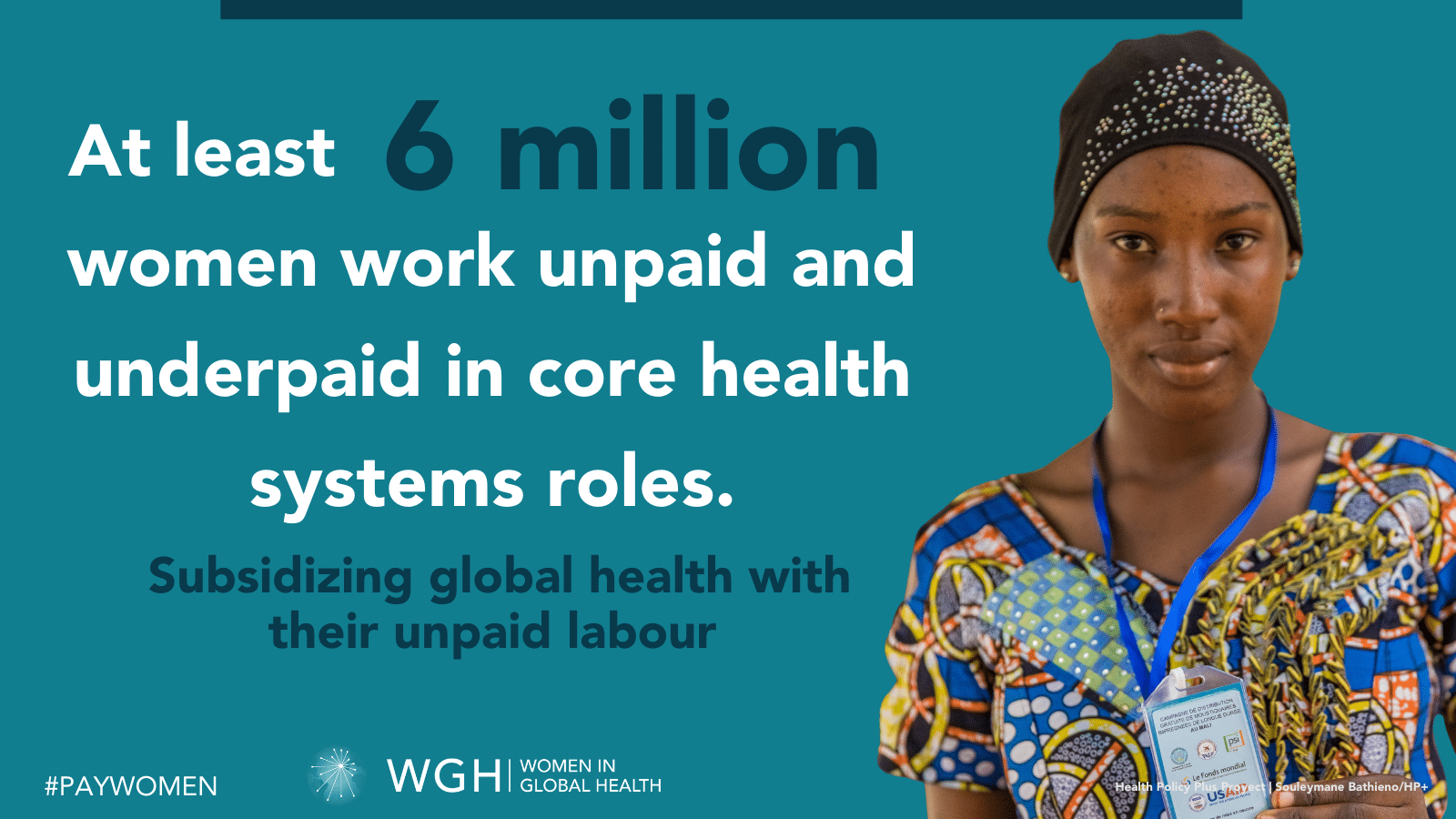Economic Justice for Women Health Workers: Leave no one behind
18 September 2024

“As a new graduate nurse, we work as ‘cover staff’ while waiting for a paid hospital job. We get no regular salary, sometimes work long shifts with no breaks, and are paid only for shifts we’re called to cover,” says Maria, a fresh graduate from Mexico and member of Women in Global Health (WGH) Mexico. Maria’s experience highlights a key driver of the gender pay gap, identified in the WHO report, The Gender Pay Gap in the Health and Care Sector.
Women are the backbone of the global health workforce, yet their contributions are vastly undervalued. The financial worth of women’s input into health systems exceeds $3 trillion annually—half of which is unpaid. Around six million women work unpaid or underpaid in core health roles, effectively subsidizing health systems with their labor. They lack formal job protections, benefits, and career progression opportunities, while health systems fail to harness the full potential of their expertise.
Globally, women make up nearly 70% of the health workforce. However, they are concentrated in lower-paid roles like nursing and midwifery, where the gender pay gap is narrower but still significant. Men dominate the higher-paid roles, such as doctors, where the gap widens. As a result, women in the health sector earn 24% less than men on average.
The situation is particularly dire in low- and middle-income countries, where a large proportion of women health workers are unpaid. In India alone, one-quarter of these six million women work without pay, mostly in community health roles.
Maria adds, “The system isn’t fair. People with connections get jobs, and the rest of us wait indefinitely. After all that training, it’s stressful not to have secure employment or pay.” Her frustration mirrors that of countless women health workers globally who face systemic barriers to fair compensation.
The Pandemic’s Impact

COVID-19 exposed and worsened existing inequalities in the health workforce. As 90% of frontline workers, women shouldered immense responsibility, often with no formal contracts or social security. Community health workers, most of whom are women, were essential to pandemic response but remained unpaid or underpaid. Additionally, women faced unsafe working conditions, often without proper PPE designed to fit women, putting their health at further risk.
A public health consultant from Zimbabwe, and member of WGH Zimbabwe, notes, “Unpaid overtime and lack of resources led to an exodus of experienced female health workers post-pandemic. Governments must incentivize and fairly compensate women for the work they do.”
What Needs to Change
The path forward is clear: we must recognize the economic value of women health workers by ensuring fair pay, decent working conditions, and gender parity in leadership. Achieving gender equity in the health workforce is not just a matter of justice—it’s crucial for building more resilient, effective health systems.
Governments must prioritize economic reforms, enforce labor protections, and provide financial incentives to support women in the health workforce. It’s time to address the myths and stereotypes that perpetuate unpaid work for women and ensure their contributions are fairly recognized.
Only by closing the gender pay gap and ensuring equal opportunities can we build a healthier, more equitable future where no one is left behind.
References
-
World Health Organization. (2022). The gender pay gap in the health and care sector: A global analysis in the time of COVID-19. https://www.who.int/publications/i/item/9789240052895
-
World Health Organization. (n.d.). Value gender and equity in the global health workforce. https://www.who.int/activities/value-gender-and-equity-in-the-global-health-workforce
-
World Health Organization. (2023). Delivered by women, led by men: A gender and equity analysis of the global health workforce (Human Resources for Health Observer Series No. 24). https://www.who.int/publications/i/item/9789240082854
-
Boniol, M., McIsaac, M., Xu, L., Wuliji, T., Diallo, K., & Campbell, J. (2019). Gender equity in the health workforce: Analysis of 104 countries [Internet]. World Health Organization. https://apps.who.int/iris/handle/10665/311314
-
Women in Global Health. (2022). Subsidizing global health: Women’s unpaid work in health systems. https://www.womeningh.org/publications
-
World Health Organization. (2019). Delivered by women, led by men: A gender and equity analysis of the global health workforce (Human Resources for Health Observer Series No. 24). Geneva: World Health Organization.
-
World Health Organization, & International Labour Organization. (2022). The gender pay gap in the health and care sector: A global analysis in the time of COVID-19. Geneva: World Health Organization and the International Labour Organization.